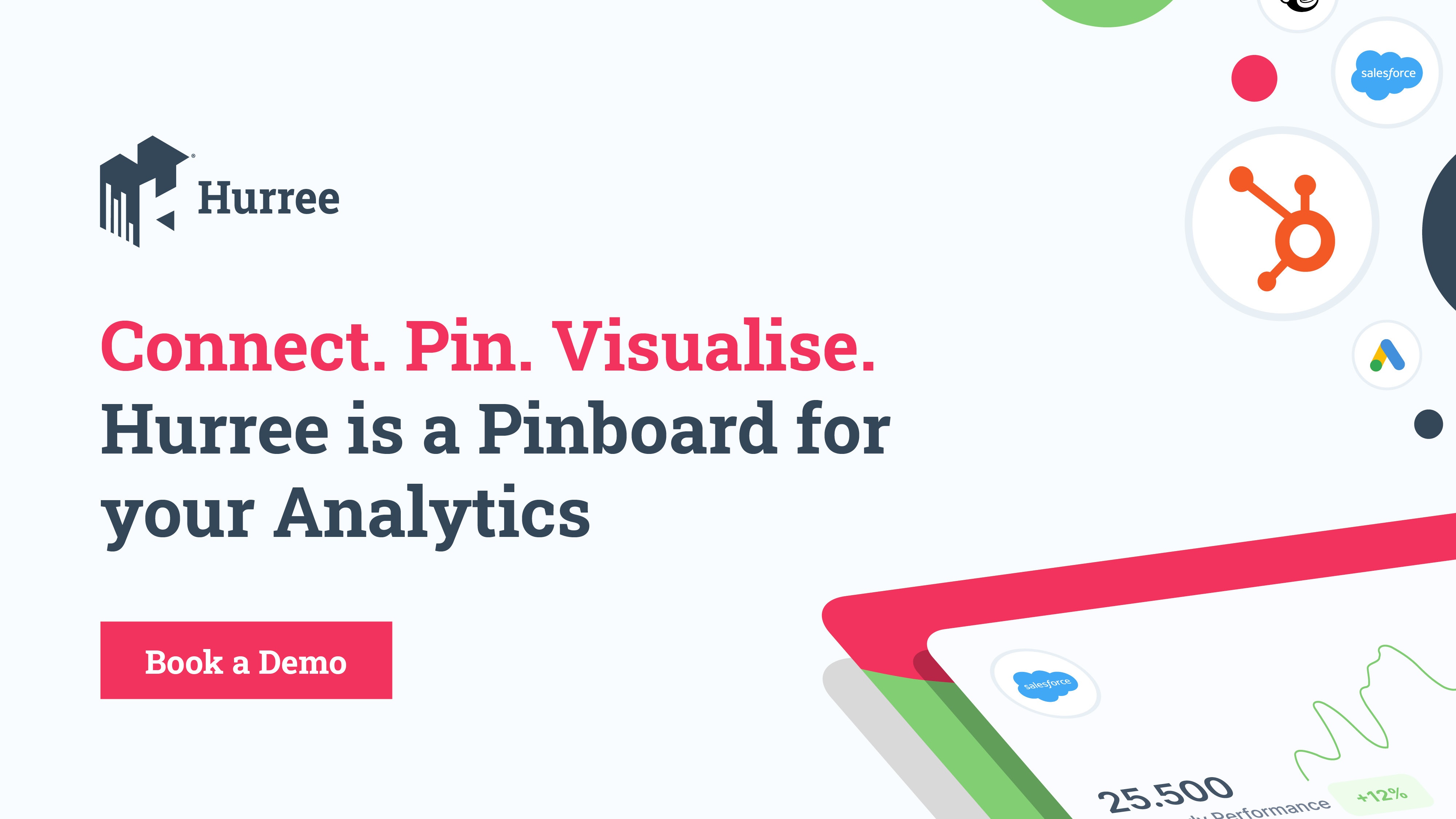7 KPIs Your SaaS Company Should be Tracking
What is SaaS?
Software as a service (SaaS) is a method of software delivery that allows data to be accessed online, from any device. Rather than manually installing the software internally, it’s as simple as accessing it via the internet, avoiding the hassle, cost and the sometimes inevitable headache associated with software installation and ongoing maintenance. Think of tools like HubSpot, Adobe Creative Cloud, Xero and Hurree.
Why is data so important for SaaS?
COVID-19 changed the way in which people work and altered the landscape of how the world does business as a whole. Back in March 2020 when companies were suddenly forced to work remotely, SaaS companies were in an excellent position to benefit from the changes brought on by the global pandemic. Even before COVID-19, the SaaS industry was growing and is still showing no signs of slowing down.
![]() Source: Exploding Topics
Source: Exploding Topics
So while this is great news for SaaS companies, this also poses its own risks: the more the industry grows, the more competition there is, especially with the emergence of new technologies and innovations. It is more important than ever for businesses to manage and measure their performance. Spotting areas where further resources and attention is needed will help SaaS companies get ahead of their competition and likewise, measuring performance to see what strategies are working well is crucial to the continued success of a SaaS company. Easier said than done though, right? That’s where KPIs can help you gain that competitive edge.
What is a KPI?
A KPI is a quantifiable measurement used to assess the progress and performance towards a given target within a company. Operating in an ever-changing digital landscape where new data is created with every click, scroll, page visit, and view means it can be overwhelming trying to determine which KPIs to measure.
Related reading: What is a key performance indicator?
Tracking too few may not give you enough valuable data to make smart, data-driven decisions, but tracking too many will require additional time and resources and chances are, will not be productive nor efficient. So let’s get stuck into the KPIs that are going to be the most beneficial for a SaaS company to measure.
1. Customer churn rate
This is the percentage of customers that sign up to your service and then cancel their subscription within a given amount of time. The majority of SaaS companies are subscription based, so success depends highly on retaining existing customers and acquiring new ones. The ideal scenario for all SaaS companies is that once your customers commit to purchasing your product, they will be loyal to you forever. This is unfortunately not the case, so some degree of customer churn is unavoidable. There will always be customers who cancel due to failed payments, a change in management, or simply because they’ve changed their mind. Generally for SaaS companies, a churn rate anywhere below 3% is ideal and anything around 5% is average.
![]()
Recording a high churn rate suggests your customers are not receiving the desired value from your product, or that you need to invest further in your customer support team to ensure existing customers are being looked after. You want your customer success team to be in frequent contact with your customers and to resolve any issues before the they decide to cancel their subscription. Acquiring new customers is typically much more expensive than retaining existing ones so it’s crucial to keep a close eye on the churn rate.
![]() Source: McKinsey
Source: McKinsey
2. Revenue churn
Revenue churn is the amount of revenue lost due to customer churn while taking into account the different pricing options you have. While these seem like similar metrics, there can sometimes be a significant difference between then two. This is usually because some customers generate more revenue than others depending on their subscription type or the number of licenses or users the customer has. Just because the customer churn rate is low, this doesn’t always mean the revenue churn will be low.
By comparing both figures, you will be able to see if customer retention is consistent or if there is more churn with your small or large customers.
![]()
This is an important metric to measure as it helps to understand how much revenue a SaaS company lost during a period specifically because of customers leaving. It is highly beneficial to have a dedicated team for retargeting your lost customers to try and bring them back and reduce the overall churn rate of the business.
3. Monthly recurring revenue (MRR)
Monthly recurring revenue is the driving force for most SaaS companies. MRR is a powerful metric that measures the total amount your customers have spent on your products each month. MRR is an essential metric for predicting the future of a SaaS business and will help in financial planning and forecasting.
There are 3 elements of MRR that will help give a better understanding of the figure:
- New MRR - The monthly revenue acquired from new users monthly.
- Expansion MRR - The additional revenue from your existing customers including any upsells, cross-sells, subscription upgrades etc.
- Churn MRR - The opposite of expansion MRR, the churn MRR shows the revenue lost when your customers cancel their subscription or downgrade to a cheaper plan. If a customer changes their monthly plan from a £500 plan to a £300 plan, your churn MRR would be £200.
If you notice your churn MRR is higher than your new MRR, then you are losing more customers than you are acquiring and urgent adjustments need to be made to rectify this. When your expansion MRR is higher than your churn MRR, then you are on to a winner. Your existing customers are upgrading and overriding the revenue lost from your customers who are cancelling.
When analysing your MRR, you can pinpoint specific customers based on who is spending the most and reward those customers for their loyalty. Offering discounts or special promotions to your regular, loyal customers demonstrates that you value them and helps to create a strong brand-customer relationship. Loyal, satisfied customers are one of your most powerful marketing tools. If they feel valued, they are more likely to do free word of mouth marketing, helping you to acquire new customers and grow your business.
![]()
Source: Nielson
4. Customer acquisition cost (CAC)
Simply put, CAC is the cost it takes to acquire a single new customer. Understanding how much it costs to gain new customers and identifying the most effective and profitable sales and marketing channels is the key to a successful SaaS business. Determining your CAC will help you make important decisions like whether or not you can afford to increase marketing spend or if you need to cut back.
![]()
CAC is used as a KPI in many industries, but it is increasingly important for SaaS companies. Their business model relies on customer retention and usually requires substantial investment to gain customers before seeing a return on investment. On average, a SaaS business will spend 92% of the first year revenue on customer acquisition. It goes without saying that if you see your CAC start to decrease, you are doing something right. Once you acquire your customer however, it doesn’t stop there. The next more important aspect is to hold on to that customer for as long as possible and maximise the customer lifetime value (CLV).
5. Customer lifetime value (CLV)
CLV in a SaaS scenario refers to the total revenue generated by a customer over the total duration of their subscription with you. For example, if a customer signs up for your product for 10 months and pays £100 each month, the CLV will be £1,000. The longer the customer stays with you, the more valuable they are.
Tracking CLV is essential for evaluating the potential and future success of a SaaS business. Since most operate with a subscription based model, each renewal yields another month or year of revenue, increasing the lifetime value per customer. CLV is an indicator of how well your product or service resonates with your customers and calculating this figure will help you easily identify your most valuable and loyal customers. Once you know this, you can engage with them and reward them for their loyalty. Likewise, you can use this figure to identify when customer churn is most likely to occur and be proactive in your approach to changing their mind.
![]()
Unless you know how much money you can generate from an average customer, it will be difficult to know how much to spend on acquiring a customer. To be successful, the cost of acquiring a customer should be considerably lower than the revenue generated from the customer during their lifetime with you. At no point should a SaaS company’s CAC be higher than its average CLV. If so, this indicates that you are selling your product for less than what it costs to make it, which is a ticking time bomb for your business.
6. Net promoter score
Moving away from financial metrics, the net promoter score is a qualitative and quantitative way to directly measure how much value your customers place on your product and ultimately how satisfied your customers are.
Customers will be asked one question to rank their experience on a scale of 1-10, with a follow up question asking for their rationale for their score. The question is usually ‘How likely are you to recommend (your company) to a colleague or friend?’ or something similar. Based on their answer, you can categorise customers into 3 groups:
- Detractors - Those who give a score of 0 - 6
- Passives - Those who give a 7 or 8
- Promoters - Those who give a 9 or 10
To calculate your NPS, you subtract the percentage of detractors from the percentage of promoters. The passive votes are not included as their response is not definite enough. For example, if 60% of your customers give a score of 9 or 10, and 20% give a 6 or below, your NPS is 40, which is considered great. Generally, any score above 0 is considered good as there are more promoters than detractors. B2B software and SaaS companies on average have a score of 30, which falls in the ‘good’ category, however there is always room for improvement.
![]()
Using the data obtained from this survey will allow you to predict how much you should be investing into acquisition. This higher your NPS is, the more likely it is that your customer referrals will convert into new leads. If you have a low NPS score, you may need to invest heavily in marketing to obtain new customers, as you cannot rely on existing customers for referrals. You might want to consider reaching out to the customers who have given a low score to discuss their results and use their feedback to improve upon. You can use historical NPS data to see if customer satisfaction has improved over time, and if it hasn’t, then you’ll probably want to look into that further. While this is true for all business, it’s particularly relevant for SaaS companies, as they rely heavily on loyal customers to continue with their subscriptions.
7. Lead velocity rate (LVR)
LVR compares the number of qualified leads generated in two different time periods. Given as a percentage, the LVR is an indicator of your pipeline's efficiency and your company's long term growth potential.
![]()
So if you have11 qualified leads this month and 10 qualified leads last month, your LVR is 10%. LVR allows you to see whether your pool of qualified leads is increasing which can be helpful for sales forecasts, future planning and indicates potential business growth. While actual revenue may differ from month to month, steadily increasing the number of qualified leads is usually a safe indicator of future growth and revenue. That being said, it’s important not to base any major financial decisions solely on this figure. Like all businesses, there may be changes and things may not always go to plan - qualified leads don’t always turn into customers. Potential customers may change their mind, lose their budget, or choose to go to your competitor. Oftentimes, they just choose to stay with their current suppliers, so keep that in mind.
When calculating your LVR it can be tempting to include all leads in your pipeline which would give an inaccurate representation of your LVR. Be sure to include only those qualified leads that are most likely to convert into actual customers for the most accurate value.
Conclusion
Understanding, measuring, and improving the KPIs listed above will be beneficial to any SaaS business to achieve success. The growth and profitability of most companies, particularly SaaS companies, are highly dependent on data-driven decisions. To be able to make those decisions though, you need to be smart about which KPIs to track. Including the 7 above on your KPI dashboard will give you an at-a-glance, clear overview of your overall performance and a good indicator of your business health. A KPI dashboard will also help you align your teams so everyone is clear on what the goals are, and their progress along the way.
Track and visualise your KPIs in real-time with Hurree. Book a free demo today and discover how to truly harness the power of analytics and transform your company reporting using cross-platform dashboards. If you have any questions then feel free to reach out to contact@hurree.co, we'd be happy to answer them!
Share this
You May Also Like
These Related Stories

How to Create SMART KPIs

[Infographic] 6 KPIs That Marketers Should Be Tracking


